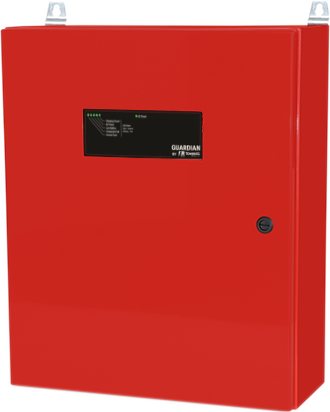 TowerIQ Introduces GuardianB, Guardian BBU, and Guardian TQ-ANN Annunciator for Enhanced Emergency Response Communication
TowerIQ Introduces GuardianB, Guardian BBU, and Guardian TQ-ANN Annunciator for Enhanced Emergency Response Communication
The life-safety communications industry is ever-changing, and so are the requirements continually placed by enforcing agencies of fire safety.
All Two-Way Radio Communication Enhancement Systems, Auxiliary Radio Communication Systems, and Emergency Radio Communication Enhancement Systems require two-way radio coverage to support first responders inside modern buildings. These requirements are determined locally, all reflecting minor differences that vary from market to market. The enforcement of these predetermined requirements is gradually, and more specifically on what status updates need to be seen by jurisdictions.
The Use of LCD
To meet these developing requirements, life-safety radio enhancement system manufacturers are integrating LCD screens with graphic user interfaces to accurately report statuses. The graphic user interface (GUI) allows for visual reporting on new information and health metrics for incident commanders, including damaged donor or DAS antennas, battery and power status(es), and many other factors affecting enhancement system performance. The use of the LCD screen combined with the GUI establishes trust between manufacturers, service partners, and enforcing agencies as all acting parties receive identical data but customized and displayed to local jurisdictions’ requirements. After integrating an LCD screen as part of the graphical user interface, TowerIQ’s Dedicated Radio Console has the ability to adapt alongside the increasing requirement changes from enforcing agencies. The utilization of an LCD-based user interface can best be presented with real-life examples.
In one instance, an enhancement system was installed and integrated with an active distributed antenna system (DAS), thus utilizing fiber optics to distribute cellular, WiFi, and public-safety radio to all distributed radios installed throughout the building. The installer of the system provided the NFPA-required annunciation feature, but only for the Bi-Directional Amplifier receiving the donor signal. The annunciation feature was not provided for the fiber optic remote radio units, creating a significant risk that when first responders required the installation it would not work because of a failed component or power supply. Without the flexibility of annunciation provided by the customizable Dedicated Radio Monitor, the installation correctly failed inspection and the installer was forced into time-sensitive and costly repairs.
The Tactical Series Dedicated Radio Console
The Dedicated Radio Console (DRC), also known as the Dedicated Radio Monitor in jurisdictions outside of New York City, can monitor all components of a DAS. The DRC allows users to monitor and report on components such as a repeater, Bi-Directional Amplifier (BDA), power supplies, battery levels, and the environmental status of each device enclosure. Due to the scroll feature of TowerIQ’s GUI, users are not limited to any number of components to have displayed on the crisp 7-inch screen.
Conclusion
TowerIQ, Inc., the premier manufacturer of life safety wireless networks for smart buildings, developed the Dedicated Radio Console to be a versatile product that can adapt to future changes in life-safety codes. While the Dedicated Radio Console is effective as an individual device, our products work collaboratively using integrated components to create and monitor a functioning life-safety system. TowerIQ provides complimentary initial designs for architects and engineers needing a life-safety wireless network. To set up a consultation, please contact us through our form.